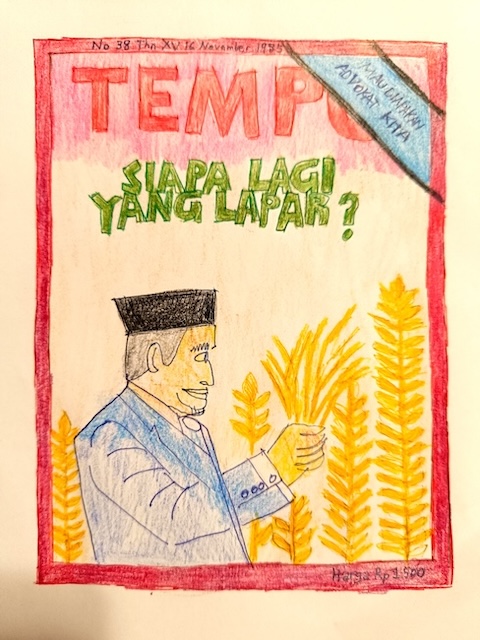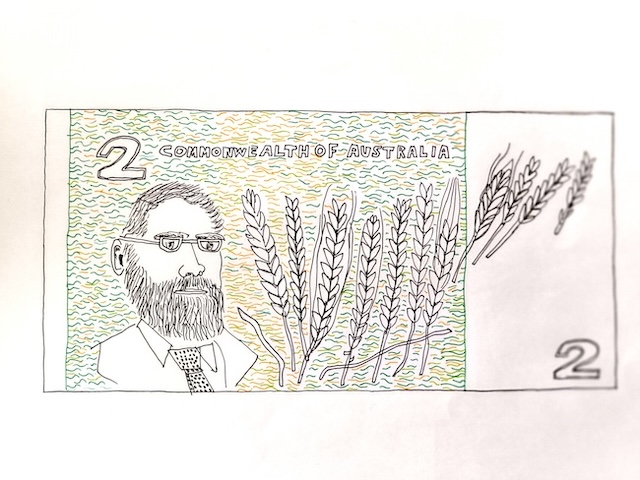More local, more sustainable? Reimagining the magazine beyond the nation-state.
Andy Fuller
The title of this publication has always irked me a little. When I first came across it, in its glossy paper form at Readings in Melbourne’s Carlton, I felt the title was odd, given that it was produced outside of Indonesia by mostly non-Indonesian authors. As coordinating editor Jemma Purdey frequently reminds us, II has now shifted to being more insiderly: contributors and readers are primarily inside Indonesia. II, I understand, was founded at a time when informative articles on ‘Indonesia’ were hard to come by amidst Australia’s myopic, American- and Euro-centric media and cultural orientation. Moreover, the high New Order censorship regime enabled things to be said outside which couldn’t be said inside. Thus, the magazine’s outsiderliness provided a necessary function for a more open discourse.
But times have changed. In my notes below, I provide three short anecdotes. They could hopefully inform how II can be re-envisioned.
Tubers
On a recent trip to Indonesia, I visited Pagesangan School, in Wintaos village. It lies in the dry Gunung Kidul hills of Yogyakarta Special Region. The school teaches a contextual, practical and environmental curriculum (Indonesian link here). My family and I stayed there for a few days and participated in workshops and farming activities. Although the village of Wintaos is only 30 kilometres south of Yogyakarta, it felt isolated, distant from the crowded city which is home to many universities and a favourite of domestic and foreign tourists. Wintaos residents spoke of Yogyakarta as a far-off place, with vastly different sensibilities and requirements for getting by. The people I met had a barely disguised disdain for the city, and no intention of moving there. They felt Yogyakarta was encroaching on their lives.
Diah Widuretno established Sekolah Pagesangan to make use of the region’s biodiversity and to utilise sustainable farming methods. On a walk through the village, she and other locals easily pointed to the variety of tubers that are adequate substitutes for rice, a crop that can only be grown in an unsustainable manner in this area. What she is doing resonates with issues being addressed elsewhere in Indonesia and throughout the world. She has received a lot of media attention both domestically and internationally.
Sheep
Barely two weeks after visiting Wintaos, I found myself staying in Australia’s Gariwerd (also known as The Grampians), for a few nights of reacquaintance with ‘the Victorian landscape’. It was my first visit in a couple of years. We passed by wheat fields. Sheep stood about lazily on gently rolling hills, their heads bowed, mowing the grass. Wheat, wool, meat. I thought how instrumental sheep had been in the colonisation and destruction of the lives of First Nations peoples, and how the ecosystem which they nurtured was destroyed through invasive animals and vegetation. Like the saying goes, (white) Australia was ‘built on the sheep’s back’. Imagery on Australian banknotes has long depicted the destructive non-human agents which have reshaped the continent, and which have in turn made it an exemplar of the Anthropocene. For some, sheep and wheat are symbols of the source of wealth; for others, they represent destruction.
Canals
Elsewhere again, along the canals of Leiden in the Netherlands, efforts have been made to re-diversify the areas of what remains as possible-green space. The Leiden city council distributes free plants to help make streets greener. It supports projects to re-wild public green spaces. Just outside Leiden’s city limits the fields are crowded with cows, producing methane, milk and meat. Farmers there protest against efforts to scale back the milk/red meat farming industries in favour of more sustainable ones. For some, a future can be found in sustainable farming and energy sources; for others, it is through holding on to the established farming industries.
Elsewheres
These three anecdotes across such different contexts and geographies reaffirm the many commonalities that exist between ‘Indonesia’ and our elsewheres. The modernist aspirations of nation-states such as Australia and Indonesia have been instrumental in reconfiguring landscapes with dramatic and deleterious impacts. Just as Jakarta floods and forests burn throughout Indonesia, so does the Australian continent wax and wane between drought and flooding due its unsustainable farming and agricultural practices. For me, that these similarities resonate so strongly across contexts is a reason to be more open and diverse in our writing. We should be creating a space for articles to mutually inform different debates and discourses.

Australia and Indonesia, like other nations, are each subject to intense projects of imagining. These assert their uniformity across disparate geographies within their ‘national’ boundaries. Reimagining ‘Indonesia’ and ‘Australia’ through a lens which foregrounds indigeneity and locality thus speaks beyond political borders (shaped by our various experiences of colonialism). Such reimagining could reinvigorate a tired discourse that has long been founded on European/ Western/ Global North efforts to know an imagined and ‘distinct’ Eastern/Global Southern other.
One of the reasons my partner Nuraini Juliastuti and I founded Reading Sideways Press was to escape some of the rigidities of defining research interest by geography. The idea of ‘reading sideways’ is an effort to re-consider one’s context through diverse acts of reading and ethnography. While working on RSP publications we have endeavoured to engage with Indonesian, Dutch and Australian writers and/or partners – whether they be authors, translators, designers or printers (and binders). While this means that RSP’s output has been eclectic, it is also an effort not to be pigeonholed (or to pigeonhole ourselves). RSP has streams of what we are interested in publishing on. They include urban cultures, the environment/geography, sport, and what is broadly categorised as literature. But these issues are not geographically bound. We are, however, fussy in the way the subjects are approached. We hope ethnographic, bottom-up theoretical approaches can lead to experimental and playful books that might not otherwise be found in mainstream publishing houses.
Mobius strip
So, where to for Inside Indonesia? I feel that this celebratory milestone of the 40th anniversary is the right time to consider the magazine’s direction. I even think a change in name wouldn’t be out of place.
The mediascape and political context of present-day Indonesia has changed a lot since Inside Indonesia’s founding. There are now many sources of analysis that II must compete with: Project Multatuli, New Mandala, The Interpreter (Lowy Institute), Indonesia at Melbourne, New Naratif, Melbourne Asia Review. ‘Indonesian studies’ in Australia are also in a curious place, with seemingly so little interest in studying Indonesian language (which is admittedly not an end in itself).
I feel I have benefitted significantly from my engagement with II. It is where I had my first article published, and where I have been able to reach an informed and enthusiastic audience with my writing. That readership doesn’t need to be convinced of the relevance and thrills of writing ‘on Indonesia’ (however we define our Indonesias). But I also think II shouldn’t be reluctant to shift form. Perhaps the mobius strip provides a relevant metaphor for what a future incarnation of II could look like: a journal which is never fully inside or outside. A journal that looks inwards to Indonesia and outwards to other elsewheres.
Andy Fuller is a co-founder of Reading Sideways Press and recently completed a postdoctoral fellowship at Utrecht University.












